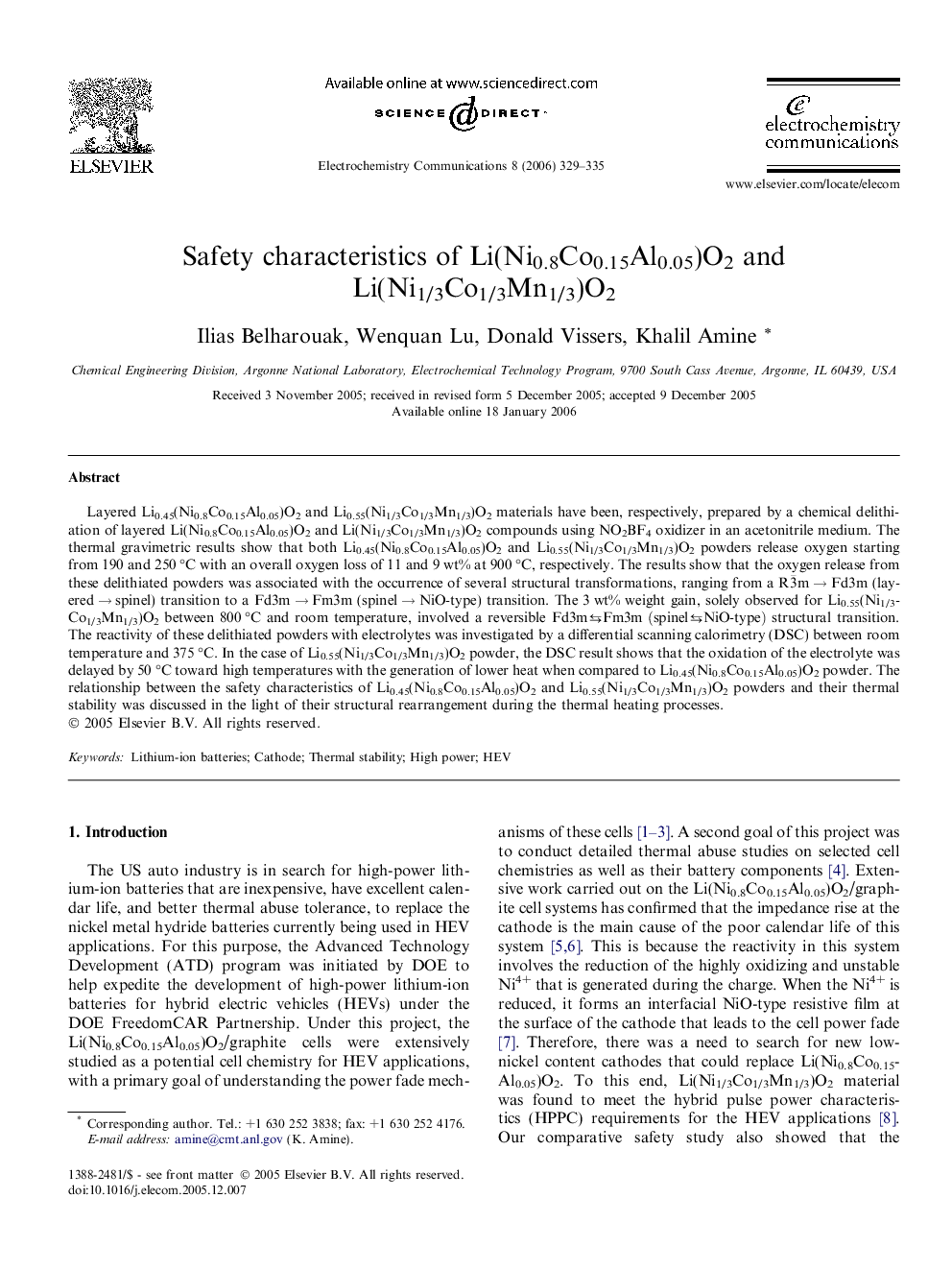| Article ID | Journal | Published Year | Pages | File Type |
|---|---|---|---|---|
| 182785 | Electrochemistry Communications | 2006 | 7 Pages |
Layered Li0.45(Ni0.8Co0.15Al0.05)O2 and Li0.55(Ni1/3Co1/3Mn1/3)O2 materials have been, respectively, prepared by a chemical delithiation of layered Li(Ni0.8Co0.15Al0.05)O2 and Li(Ni1/3Co1/3Mn1/3)O2 compounds using NO2BF4 oxidizer in an acetonitrile medium. The thermal gravimetric results show that both Li0.45(Ni0.8Co0.15Al0.05)O2 and Li0.55(Ni1/3Co1/3Mn1/3)O2 powders release oxygen starting from 190 and 250 °C with an overall oxygen loss of 11 and 9 wt% at 900 °C, respectively. The results show that the oxygen release from these delithiated powders was associated with the occurrence of several structural transformations, ranging from a R3¯m→Fd3m (layered → spinel) transition to a Fd3m → Fm3m (spinel → NiO-type) transition. The 3 wt% weight gain, solely observed for Li0.55(Ni1/3Co1/3Mn1/3)O2 between 800 °C and room temperature, involved a reversible Fd3m⇆Fm3m(spinel⇆NiO-type) structural transition. The reactivity of these delithiated powders with electrolytes was investigated by a differential scanning calorimetry (DSC) between room temperature and 375 °C. In the case of Li0.55(Ni1/3Co1/3Mn1/3)O2 powder, the DSC result shows that the oxidation of the electrolyte was delayed by 50 °C toward high temperatures with the generation of lower heat when compared to Li0.45(Ni0.8Co0.15Al0.05)O2 powder. The relationship between the safety characteristics of Li0.45(Ni0.8Co0.15Al0.05)O2 and Li0.55(Ni1/3Co1/3Mn1/3)O2 powders and their thermal stability was discussed in the light of their structural rearrangement during the thermal heating processes.
